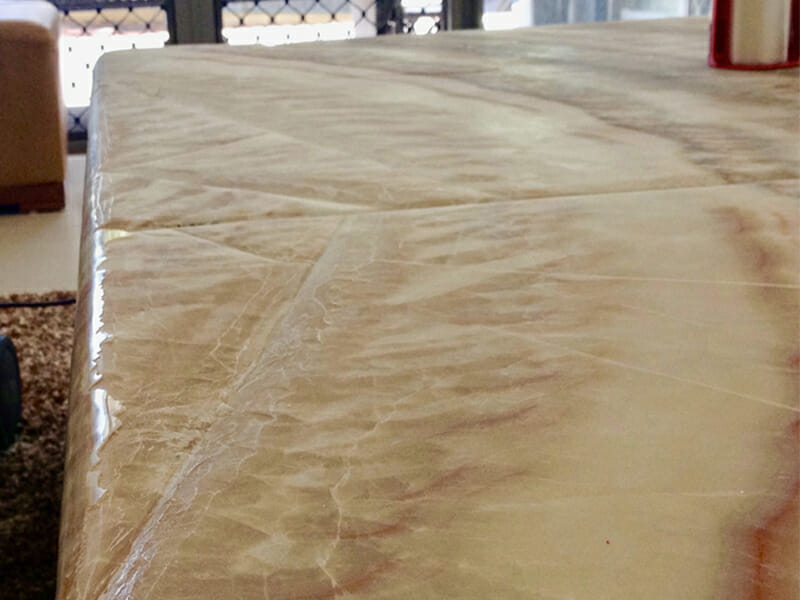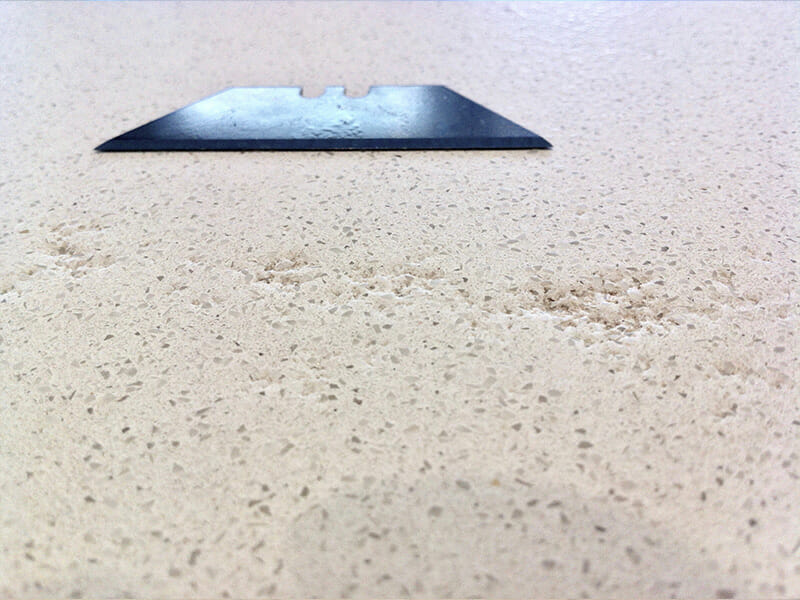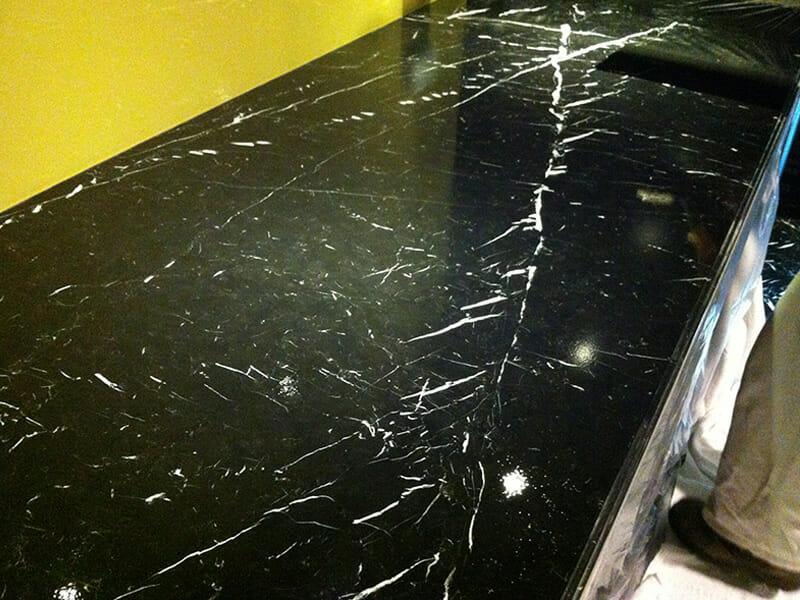

Are the corners of your marble dining table chipped?
It is common for the corners and edges of natural marble, onyx, limestone and travertine dining and coffee tables to chip, as their freestanding position exposes them to knocks.
Granite and engineered stone furniture, whilst somewhat harder than the softer, natural stones, can also chip when placed in high traffic locations.
Small chips can occur from impact, for example when setting a table. A heavy ceramic plate or bottle, accidentally impacting the edge of a stone dining table when setting it can chip the stone.
The process for repairing chips in marble and other stone tables and furniture, involves using special epoxy resins, which can be colour matched to replicate the look of the stone.
The area is prepared and cleaned thoroughly with a solvent before the chip is filled. A coloured pigment is mixed with the resin, which is then carefully and skillfully placed in the chipped area. Once the resin hardens it is polished and shaped to match the original look of the stone surface. A UV light is used to cure special resins used on engineered stones.
Contact The Marble Man today for a quote on repairing your chipped stone furniture.
EMAIL OR CALL US NOW! 1300 627 626


Has your onyx coffee table sustained a crack?
Cracks in natural marble, onyx, travertine, limestone and travertine tables and other natural stone furniture, and in engineered stones such as Caesarstone, Essastone, Quantum Quartz, Silestone and HanStone, are not common but do occur when the heavy stone table does not have adequate support in the form of a strong, evenly distributed table base. If weight is repeatedly put on the weakest or least supported part of the table, from standing or sitting, then this pressure can cause the stone to crack.
Cracks in a marble dining or coffee table and other natural and engineered stone furniture are treated in a similar way to chips, however depending on the size of the crack and whether the stone has dropped, it may need to be lifted and clamped.
An aluminium bar may need to be glued out of sight underneath the 2 parts of the stone to provide support and to and reinforce the repair. Epoxy resin and a coloured pigment are combined to fill the gap and match the colour and texture of the marble or stone surface. In the case of engineered stone a special resin cured by a UV light is used to repair the crack.
Once the resin hardens it is polished and shaped to match the existing stone surface.
EMAIL OR CALL US NOW! 1300 627 626


Has wine etched rings on your marble bar table?
Etching is when deep lines and pits are created in natural stone surfaces and the stone is effectively ‘eaten away’. Dining and coffee tables made from natural marble, onyx or limestone look stunning but are subject to constant exposure to acidic substances such as wine, tea, coffee and juice, or the wrong cleaning products, which cause etching.
Precautions must be taken when placing glasses of wine or cups of tea and juice on marble tables and other natural stone furniture. Using coasters or protective placemats can help prevent damage. A high gloss polish can also be slightly more protective than a matt finish, as it is less porous, however spills must still be removed instantly.
The only way etching can be completely removed is to have the surface of the natural stone table repolished. The top layers are ground down to reveal the fresh new marble, limestone, onyx or travertine underneath.
Whilst sealing a table made from marble, onyx, limestone or travertine furniture is recommended to avoid staining, this will not protect it from etching. It is recommended that a protective barrier be applied such as Tuffskin film, made to protect natural stone, which will provide long lasting protection from etching and permanent damage.
EMAIL OR CALL US NOW! 1300 627 626


Have sharp objects scratched your stone coffee table?
Scratches are common on natural stone dining and coffee tables. Although marble, onyx, travertine and limestone appear hard, they are classified as soft, natural stones and are susceptible to scratching when exposed to constant and repeated dragging of items over the surface and using the wrong scourers and cleaning products.
To avoid fine scratches on natural stone tables use placemats and coasters and do not drag items across the surface. Avoid using green scourers, steel wool or abrasive cleaners as these can cause swirl marks. The only scourer that can be safely used on a natural stone table is a white, nylon Scrub A Dub.
The only way to remove scratches on a marble, onyx, limestone or travertine dining or coffee table is to repolish or hone the surface. This will reveal the smooth, undamaged layers underneath. Once it has been repaired, a product called Tuffskin can be applied to provide a barrier between the natural stone surface and any items that may scratch the table. This can be replaced rather than repolishing the table.
If scratches are not repaired they will not only compromise the look and appeal of the stone furniture, they will allow moisture to enter the stone causing further damage and staining.
EMAIL OR CALL US NOW! 1300 627 626
MASTER BUILDERS QLD MEMBER

HIA QLD MEMBER

TUFFSKIN APPROVED APPLICATOR

AQUAMIX APPROVED APPLICATOR

DRYTREAT APPROVED APPLICATOR


